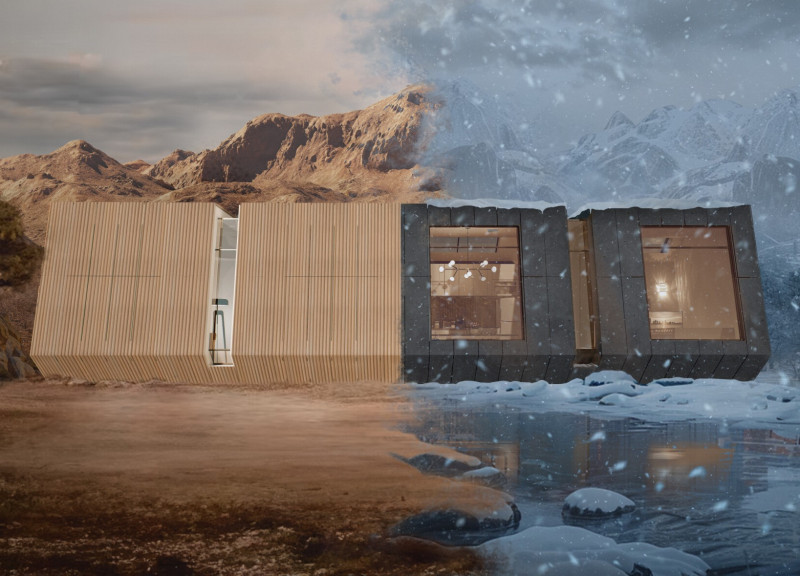5 key facts about this project
At the heart of the project lies an innovative design that reflects a comprehensive understanding of its purpose. The architects focused on creating versatile spaces that accommodate various activities, from collaborative meetings to intimate gatherings. Each area is intentionally designed with specific functions in mind, supporting the overall mission of enhancing community engagement. Natural light plays a pivotal role in this architecture, with strategically placed windows and skylights that flood the interiors with sunlight, creating an inviting and warm atmosphere. The visual connection to the external environment not only enhances the aesthetic appeal but also strengthens the bond between the occupants and their surroundings.
Materiality is a crucial component of this project, featuring a thoughtful selection of sustainable materials that contribute to both aesthetics and performance. The façade employs a combination of locally sourced stone, timber, and glass, which not only reflects the region's architectural heritage but also underscores the commitment to sustainability. The use of these materials facilitates energy efficiency, as they promote passive heating and cooling, reducing the overall environmental impact of the building. Furthermore, the selected materials exhibit durability, ensuring the structure will withstand the test of time while minimizing maintenance needs.
A unique aspect of this project is its emphasis on integrating indoor and outdoor spaces. The design incorporates expansive terraces and green roofs, allowing flora and fauna to play a role in the architecture. This biophilic approach creates a seamless transition between the built environment and nature, offering occupants a chance to connect with the outdoors. The landscaping around the building is meticulously planned, featuring native plant species that thrive in the local climate, further enhancing sustainability while providing an inviting setting for users.
The architectural forms exhibit a contemporary yet approachable aesthetic, characterized by clean lines and thoughtful proportions. The interplay of light and shadow across the building’s surfaces adds depth to the visual narrative, creating a dynamic experience as the sun moves throughout the day. The overall massing is designed to complement the site’s topography, respecting the existing context while also making a statement in its own right. This attention to the surrounding environment reveals an understanding of the importance of contextual architecture—design that respects and enhances its location.
The interior spaces are equally considered, with a layout that prioritizes flow and accessibility. Flexible furniture arrangements encourage adaptability, fostering a sense of community and collaboration within the project. The design integrates technology in a manner that supports modern workflows without overwhelming the natural elements of the architecture. Acoustic considerations are addressed through material choices and spatial organization, creating a comfortable atmosphere that supports professional and social interactions alike.
In summary, this architectural project represents more than just a physical structure; it is a testament to modern design principles that marry functionality with sustainability and aesthetics. By focusing on user experience, materiality, and environmental integration, it stands as a model of how architecture can positively impact communities. For those interested in delving deeper into the nuances of this project, an exploration of the architectural plans, sections, and various design elements will provide comprehensive insights into the innovative ideas that shaped this endeavor. Exploring these facets can enhance understanding of how thoughtful design can create meaningful connections between people and their environments.


























